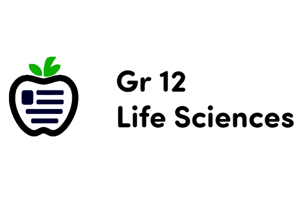Podcast
Questions and Answers
What is the primary function of the nervous system?
What is the primary function of the nervous system?
- To coordinate and control bodily activities (correct)
- To transport oxygen throughout the body
- To produce hormones
- To regulate body temperature
Which of these activities is primarily controlled by the nervous system?
Which of these activities is primarily controlled by the nervous system?
- Digestion of food
- Beating of the heart
- Sneezing and coughing
- All of the above (correct)
Which part of the nervous system is responsible for processing sensory information?
Which part of the nervous system is responsible for processing sensory information?
- Peripheral Nervous System
- Central Nervous System (correct)
- Autonomic Nervous System
- All of the above
Which is an example of an involuntary action controlled by the nervous system?
Which is an example of an involuntary action controlled by the nervous system?
What is the main role of the peripheral nervous system?
What is the main role of the peripheral nervous system?
Flashcards
Nervous System
Nervous System
A complex network of specialized cells that transmit signals throughout the body, enabling communication and coordination.
Central Nervous System (CNS)
Central Nervous System (CNS)
The brain and the spinal cord, which make up the central processing unit of the nervous system.
Peripheral Nervous System (PNS)
Peripheral Nervous System (PNS)
All the nerves that extend throughout the body, connecting the CNS to the rest of the body and the environment.
Somatic Nervous System
Somatic Nervous System
Signup and view all the flashcards
Autonomic Nervous System
Autonomic Nervous System
Signup and view all the flashcards
Study Notes
Overview of the Nervous System
- The nervous system is a complex network of specialized cells, tissues, and organs that coordinate actions and transmit information throughout the body.
- It is responsible for processing sensory information, controlling movement, and maintaining homeostasis.
- The nervous system is divided into two main parts: the central nervous system (CNS) and the peripheral nervous system (PNS).
Central Nervous System (CNS)
- The CNS is composed of the brain and spinal cord.
- The brain is the primary control center, responsible for higher-level functions such as thought, memory, emotion, and language.
- The brain is divided into several regions, including the cerebrum (responsible for higher-level functions), cerebellum (coordination and balance), and brainstem (basic life functions).
- The spinal cord transmits signals between the brain and the rest of the body.
- It also controls reflex actions.
Peripheral Nervous System (PNS)
- The PNS is the network of nerves that connects the CNS to the rest of the body.
- It is further divided into the sensory and motor divisions.
- The sensory division carries sensory information from the body to the CNS, while the motor division carries motor commands from the CNS to the muscles and glands.
Types of Neurons
- Neurons are the fundamental units of the nervous system.
- There are three main types of neurons based on function: sensory neurons, motor neurons, and interneurons.
- Sensory neurons transmit information from sensory receptors to the CNS.
- Motor neurons transmit information from the CNS to muscles or glands.
- Interneurons connect sensory and motor neurons within the CNS.
- Neurons use electrochemical signals (action potentials) to communicate with each other.
Neurotransmitters
- Neurotransmitters are chemical messengers released by neurons to transmit signals across synapses, the junctions between neurons.
- Different neurotransmitters have different effects on the nervous system.
- Examples include dopamine, serotonin, norepinephrine, and acetylcholine.
Synapses
- Synapses are the spaces between neurons where communication occurs.
- Neurotransmitters are released from the presynaptic neuron and bind to receptors on the postsynaptic neuron.
- This binding can either excite or inhibit the postsynaptic neuron.
Divisions of the Peripheral Nervous System
- The PNS is further divided into the somatic and autonomic nervous systems.
- The somatic nervous system controls voluntary movements of skeletal muscles.
- The autonomic nervous system regulates involuntary functions such as heart rate, digestion, and breathing.
- The autonomic nervous system is further divided into the sympathetic and parasympathetic divisions, which have antagonistic effects.
- The sympathetic nervous system prepares the body for "fight or flight" responses.
- The parasympathetic nervous system promotes "rest and digest" responses.
Nervous System Disorders
- Several disorders can affect the nervous system, ranging from minor inconveniences to severe conditions.
- Some examples include multiple sclerosis, Parkinson's disease, Alzheimer's disease, stroke, and epilepsy.
Neurological Function and Homeostasis
- The nervous system plays a crucial role in maintaining homeostasis within the body.
- It constantly monitors and regulates internal conditions such as temperature, blood pressure, and blood glucose levels.
- Sensory information from internal organs is essential for maintaining homeostasis.
Studying That Suits You
Use AI to generate personalized quizzes and flashcards to suit your learning preferences.




